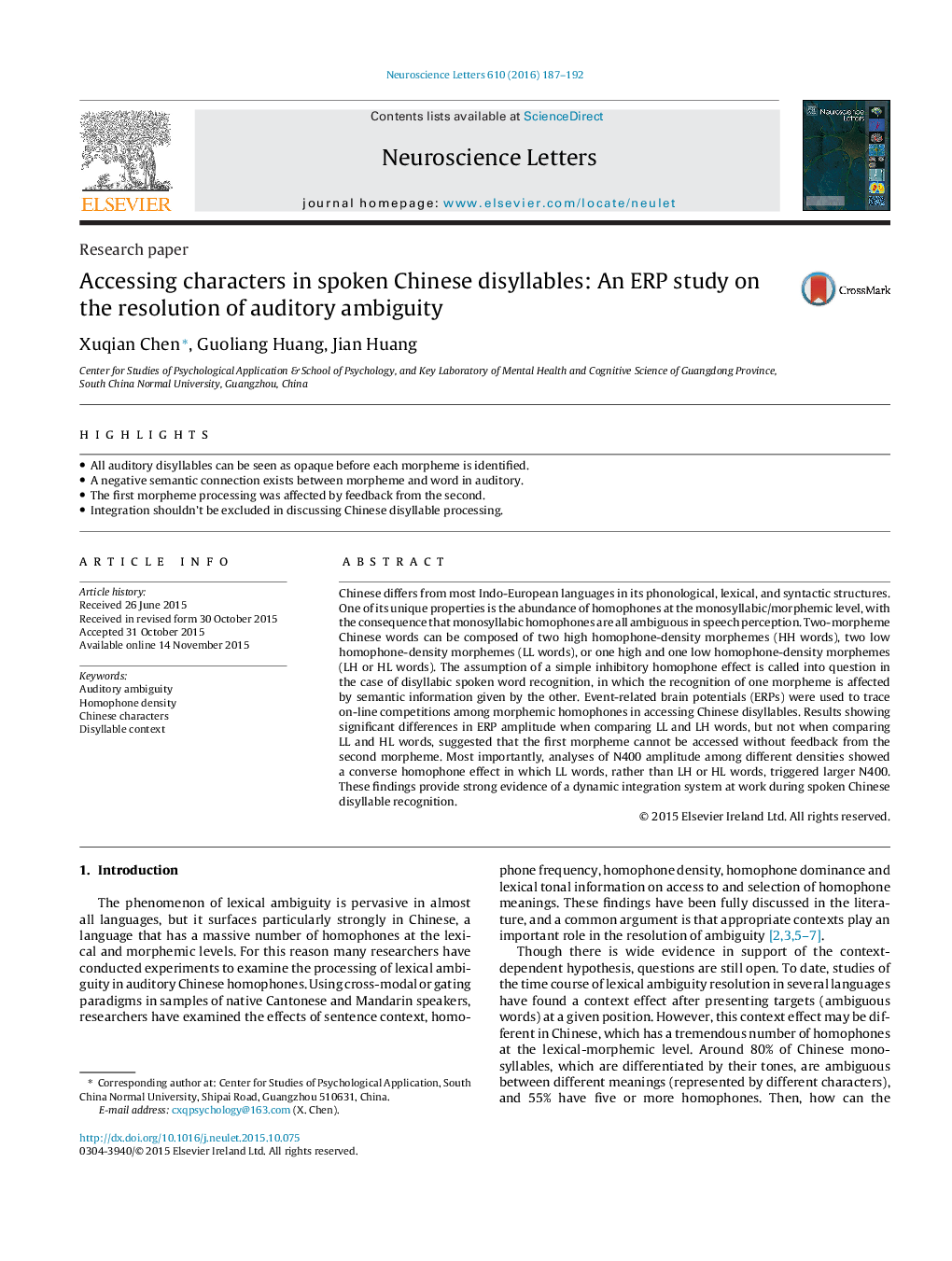| Article ID | Journal | Published Year | Pages | File Type |
|---|---|---|---|---|
| 6280260 | Neuroscience Letters | 2016 | 6 Pages |
Abstract
Chinese differs from most Indo-European languages in its phonological, lexical, and syntactic structures. One of its unique properties is the abundance of homophones at the monosyllabic/morphemic level, with the consequence that monosyllabic homophones are all ambiguous in speech perception. Two-morpheme Chinese words can be composed of two high homophone-density morphemes (HH words), two low homophone-density morphemes (LL words), or one high and one low homophone-density morphemes (LH or HL words). The assumption of a simple inhibitory homophone effect is called into question in the case of disyllabic spoken word recognition, in which the recognition of one morpheme is affected by semantic information given by the other. Event-related brain potentials (ERPs) were used to trace on-line competitions among morphemic homophones in accessing Chinese disyllables. Results showing significant differences in ERP amplitude when comparing LL and LH words, but not when comparing LL and HL words, suggested that the first morpheme cannot be accessed without feedback from the second morpheme. Most importantly, analyses of N400 amplitude among different densities showed a converse homophone effect in which LL words, rather than LH or HL words, triggered larger N400. These findings provide strong evidence of a dynamic integration system at work during spoken Chinese disyllable recognition.
Keywords
Related Topics
Life Sciences
Neuroscience
Neuroscience (General)
Authors
Xuqian Chen, Guoliang Huang, Jian Huang,
